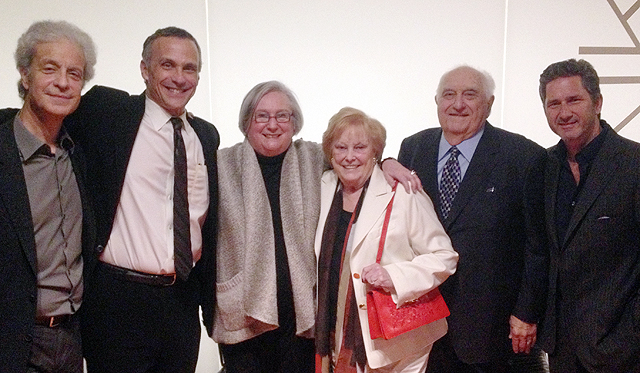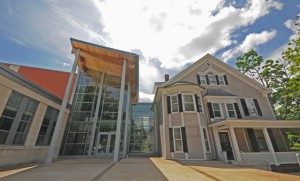Wesleyan Creating New College of Film and the Moving Image

Wesleyan has announced the establishment of a new College of Film and the Moving Image, which includes the Film Studies Department, the Center for Film Studies, the Cinema Archives and the Wesleyan Film Series.
“We’re excited to bring together all the great things we’ve been doing around film—the Film Studies major and minor, the Cinema Archives and the Wesleyan Film Series—under the umbrella of the College of Film and the Moving Image,” said President Michael Roth. “The film curriculum is already so very strong, anchored in liberal learning and connected with the making of new work for cinema, television, and the web. The college structure will enable us to marshal our resources more effectively and to shine a brighter light on the great work that’s been happening in film and related areas for some time.”
Roth announced the creation of the new college at an event for alumni and friends of the university in Los Angeles, Calif. on Feb. 18.

The university already houses three other interdisciplinary colleges: College of Letters, College of the Environment and College of Social Studies. The film program has a long history of supporting interdisciplinary study, with seven other departments cross-listing their courses with film.
“Since its birth around the early 1970s, the Film Studies Department has been interdisciplinary,” said Jeanine Basinger, the Corwin-Fuller Professor of Film Studies, founder and curator of the Wesleyan Cinema Archives. “We are delighted that the College of Film and Moving Image unites the Film Studies Department, the Cinema Archives, the Center for Film Studies, and the Wesleyan Film Series into a single entity. Thanks to President Michael Roth, the Educational Policy Committee, our dean and our provost for all the support that we were given.”
According to Scott Higgins, acting chair and associate professor of film studies, Wesleyan leads all other liberal arts colleges in the area of film studies, and compares well with major film schools, according to such rankings as The Hollywood Reporter’s. Yet, he said, “We are not only a film production program. We offer a true liberal arts approach to the study of the moving image. In the past half-decade, we’ve seen many other liberal arts colleges develop film programs, lots of them employing our model.”
Basinger began planning the new college about two years ago. The film major and film department will remain unchanged, Higgins said, though he added, “we hope that the new college will allow us to build on our current success.” The film major has grown steadily from fewer than 30 students at its inception to more than 80 today. In anticipation of the college, Higgins said, Wesleyan introduced a film minor last fall, developed a new general course on Hollywood Storytelling for all students, and bolstered the screenwriting curriculum for non-majors.
“We’ve long been pushing the limits of our resources, trying to keep up with the demand for moving-image courses while keeping our identity as a tightly knit intellectual community. We are certainly prepared to continue in this direction, and the designation of the college will give us the stability to do that,” Higgins said.
The new college also will provide a framework to more closely unite the Cinema Archives with the film major and minor. Last fall, Wesleyan hired Andrea McCarty as the Charles W. Fries Curator of the Cinema Archives. “The Archives are a major historical resource for film scholars at an international level, and Andrea will oversee its growth as more filmmakers seek a repository for their materials. She is also spearheading an initiative to integrate the Archives and the Major, by making the collections accessible to our classes and planning a course on media archiving that she will offer in our department,” explained co-curator and founder Basinger.
In 2012, the Center for Film Studies hosted 12,700 visitors. The center includes spaces such as the Rick Nicita Gallery, the Powell Family Cinema and the Goldsmith Family Cinema.
“The center’s success has exceeded our expectations, and making it a central part of the college recognizes its importance to campus, Middletown and the region,” Higgins said.
The college also will enhance collaboration among film students at Wesleyan.
“Filmmaking is intensely collaborative, and each generation of senior filmmakers draws their crew from the ranks of Wesleyan classmates, giving prospective majors first-hand creative experience,” Higgins said. “This is one of the reasons that Wesleyan Film Studies has such continuity from year to year, decade to decade, and that cycle helps strengthen our alumni network. Our studies courses, too, involve student collaboration and the student film series fosters a campus-wide film culture that unites students outside of the classroom.”

